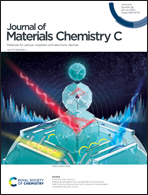Electrochemical synthesis of 2D antimony, bismuth and their compounds
Abstract
Two-dimensional (2D) group-VA layered nanomaterials have broad application prospects due to their unique physical and chemical properties and functional structures and have been receiving increasing attention in recent years. Compared with phosphorene and arsenene, 2D antimony, bismuth and their compounds have excellent physical and chemical properties, endowing them with broad application prospects in important and widespread research fields. The mass production of high-purity or special-function 2D antimony, bismuth and their compounds is important in promoting basic research and industrial applications. Amongst the most advanced synthetic methods at present, electrochemical exfoliation is a promising method, which is low cost, environmentally friendly and involves simple operation and instruments and mild conditions. In this work, we briefly reviewed the recent research progress in the preparation of 2D antimony, bismuth and their compounds by electrochemical exfoliation depending on the direction of the exfoliating voltage. Furthermore, we discussed the possible peeling mechanisms and potential applications of different peeling methods in detail. Finally, the development trends, challenges and opportunities for the technology in the preparation of 2D antimony, bismuth and their compounds by electrochemical exfoliation that have emerged are outlined.



 Please wait while we load your content...
Please wait while we load your content...